Types of pasta
There are many types ofpasta and each of them is indicated to prepare a specific dish or to beaccompanied by a kind of sauce. Due to its shape, texture, size or ingredients,we can find infinite possibilities
TRIED AND TESTED
Share
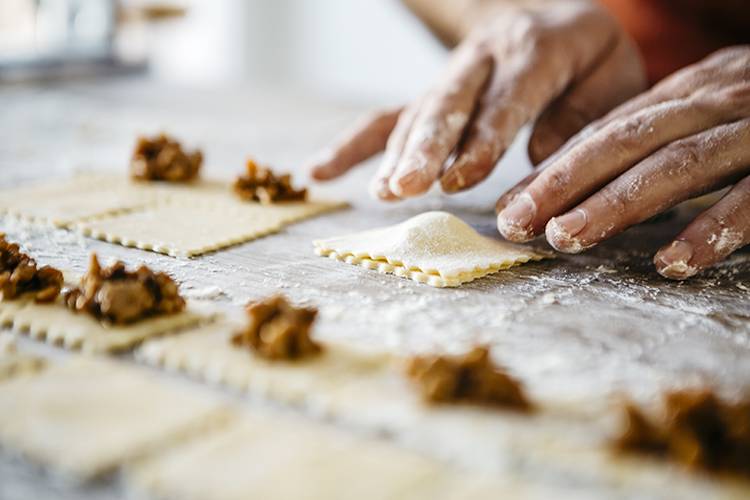
The types of pasta that we had in our country a few years ago were basically reduced to a few such as macaroni, spaghetti and cannelloni. However, the great influence of Italian cuisine has brought us a long list of pasta varieties that we can enjoy today. Although some types of pasta are familiar to us, such as fussilli or farfalle, many others you are probably not familiar with. Next, we will discover the different types of pasta that exist, how to prepare them correctly and some Italian recipes, so that you can prepare them at home and get out of the routine.
Difference between dry and fresh pasta
Although the ingredients to make, both fresh and dry pasta, are usually the same: water; wheat flour or semolina and egg, there are some differences between them. Take note of the differences between these types of pasta!
• Type of elaboration: while fresh pasta is usually made with wheat semolina, dry pasta admits different ingredients in its elaborations, such as some integral ingredients.
• Dehydration: both types of pasta start out as fresh pasta, but while fresh pasta usually maintains its original format, dry pasta undergoes a dehydration process. That is, water is removed using some heat source. To do this, different methods are usually used, some more traditional such as drying in the sun or in the oven, and others more innovative such as electric dehydrators.
• Conservation and consumption: while fresh pasta should be eaten right away or, if not, kept in the fridge for a few days, dried pasta can last for months, or years, in a bag.
• Type of cooking: fresh pasta cooks faster than dry pasta.
Despite its valuable flavor and consistency, fresh pasta does not provide nutritional advantages over dry pasta.
Types of pasta according to their size and shape
Today we can find multiple types of pasta depending on its preparation, size and shape. Next, we group the most common types of pasta.
Types of long pasta
- Spaghetti- Spaghetti
- Fettuccine
- Fusilli
- Noodles
- Pappardelle
- Tagliatelle
Types of short pasta
- Gnocchi
- Casarecce
- Farfalle - Bow Ties
- Spirals
- Maccheroni - Macaroni
- Feathers
- Fideua
Types of stuffed or stuffed pasta
- Cannelloni – Cannelloni
- Lasagna – Lasagna
- Ravioli
- Tortellini
Types of pasta for broths or soups
- Noodles
- Stars
- Letters
Short pasta | |||
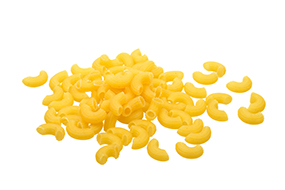 | Macaroni Narrow, slightly curved or straight tubes. |  | Rigatoni Tubular paste with parallel striations, slightlycurved, 3.5 cm long. Very good with meat sauces. |
 | Tortiglioni Tubular pasta with slightly coiled striations. | 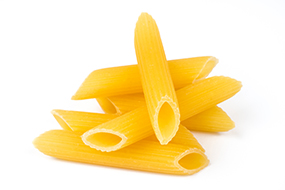 | Penne (feathers) Short tube shape, with stripes on its outer face. |
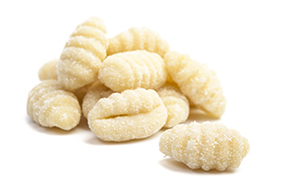 | Gnocchi Mashed potato and flour pasta, with an oval shape. | 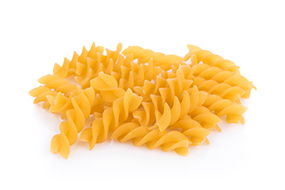 | Fusilli Helix or bow tie shape Ideal for summer salads. |
 | Farfalle Butterfly-shaped with serrated edges. |  | Ruote Wheel-shaped. Children love it and it can be accompanied by vegetables, legumes or cheese au gratin. |
 | Sharks With a tubular and semicircular shape. Perfect for soups. | 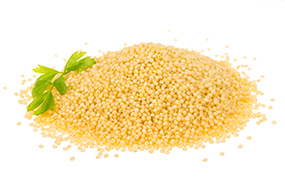 | Maravilla Pasta in the form of small grains of rice, mostly usedin consommés. |
 | Angel hair or noodles This is the short version of spaghetti. They tend to be of the same thickness or even finer. | ||
Long pasta | |||
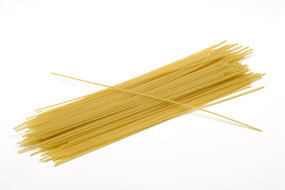 | Spaghetti Elongated and round in shape. It's the pasta we'remost familiar with. | 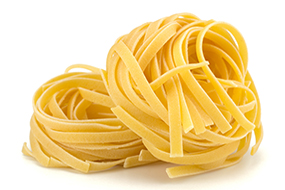 | Tagliatelle (noodles) Similar to spaghetti but with a rectangular or flatcross-section. |
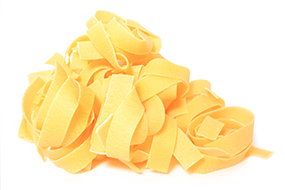 | Pappardelle Flat strips up to 2.5 cm wide. | 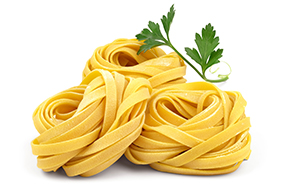 | Fettuccine Elongated, flat pasta, 6 mm wide. This is the Romanversion of tagliatelle. |
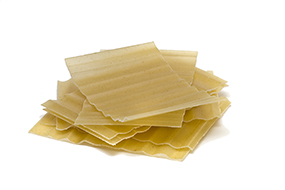 | Cannelloni Small rectangular sheets that can be stuffed with meator vegetables and mixed with sauce. | 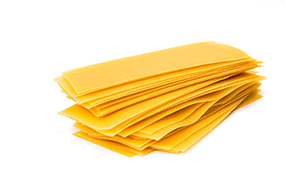 | Lasagna Rectangular or square sheets with serrated edges. Similar to cannelloni but prepared in layers. |
Stuffed pasta | |||
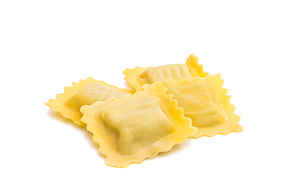 | Ravioli Shaped square package They are mainly stuffed withmeat, spinach or cheese. | 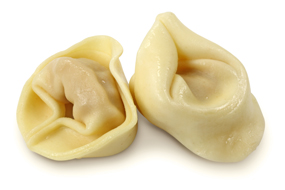 | Tortellini With a knotted roll shape. They are also usuallystuffed with meat, parmesan cheese or other ingredients. |
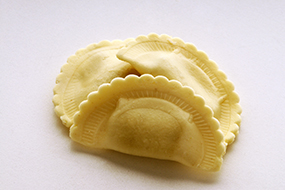 | Panzerotti A type of plain pasta in the form of half-moon. | 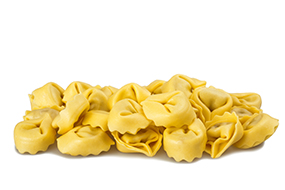 | Cappelletti A stuffed pasta in the form of a small hat. |
 | Agnolotti A ravioli with rounded edges. | ||
Types of pasta for each sauce
There are many types of pasta and each of them is indicated to prepare a specific dish or to be accompanied by a kind of sauce. Due to its shape, texture, size or ingredients, we can find infinite possibilities.
- Smooth pasta: without grooves, curls or holes, it is the most suitable for light sauces.
- Striped pasta: recommended for denser sauces, since the striations allow the sauce to adhere better.
- Pierced or tubular pasta: recommended for sauces that incorporate large pieces of some other ingredient, such as vegetables.
Tips for cooking pasta
Today there are as many types of pasta as there are sauces and condiments with which to accompany it, but... There is only one correct way to cook pasta! Take note of the recommendations that we present below:
- Condiments: when boiling different types of pasta in water, never add condiments to the water. These are thrown in the sauce or in the plating.
- How to boil the pasta: raise the heat to the maximum temperature and when the water reaches a boil, pour in the salt (a tablespoon, for every 200 g). Immediately add the pasta to the water and stir it with a wooden spoon so that it doesn't stick together. eye! Never add oil and pay attention to the cooking minutes that are indicated on the back of the package so that the pasta is al dente.
- Do not wet the pasta once it has boiled: once the cooking time has elapsed, drain the pasta with a strainer and add the sauce. If you wish, you can reserve a little of the hot water from the same cooking to "butter" the sauce. eye! When you remove the pasta from the heat, do not let it sit or soak it in cold water.
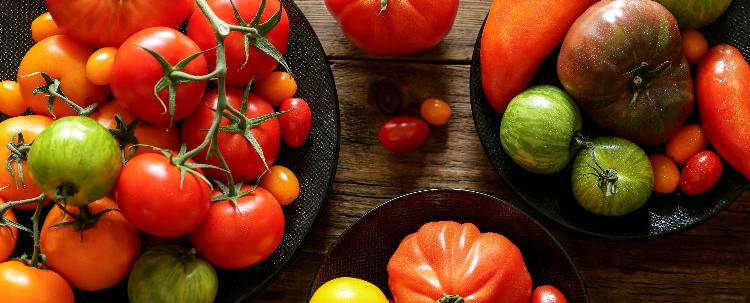
A guide to which tomato is best for each dish
Read more
A guide to which tomato is best for each dish






